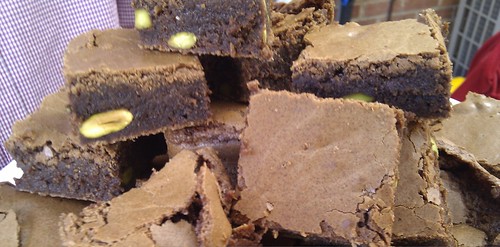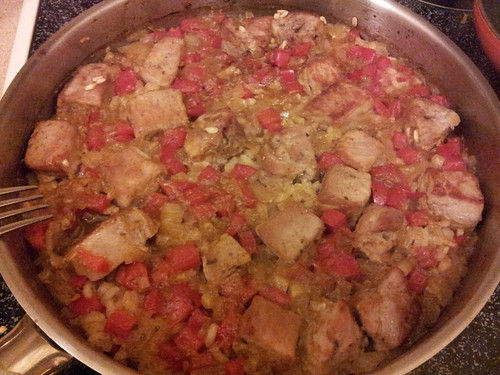It’s been a long time between brownie recipes, hasn’t it? I think the most recent effort was back in June with a good but very sweet batch.
This recipe comes originally from The City of London Cook Book (a book that sounds pretty cool to me!) but I actually found it on the UK Marie Claire site.
Before starting on this I was a bit nervous because of the HUGE amount of sugar involved (brace yourselves – it’s in excess of 500g). However, as I was baking these brownies for a BBQ I figured I wasn’t going to have to eat too many of these myself.
Begin my melting 255g of dark chocolate with 255g of unsalted butter (as always, this happened in the microwave). I omitted the vanilla essence – I’ve decided it’s pointless in chocolate brownies.
Add 280g of caster sugar and 280g of soft brown sugar to the chocolate and butter mix and melt again (also in the microwave for me – but now you’ve added the sugar be sure to be extra vigilant!).
After this stage, I transferred the mixture to the KitchenAid and added the 5 eggs, one at a time, beating well between each egg. If your chocolate mixture is quite warm I’d allow it to cool a little before adding the eggs – you don’t want them scrambling!
Once the eggs are well incorporated, add 280g of plain flour, 2 tsp of baking powder and a pinch of salt. Mix well before gently mixing through 80g of (shelled, and NOT salted) pistachios.
Pour the mixture into a base lined tin and baked in an oven preheated to 170°C (conventional, not fan) for 30-45 minutes. The top should be crisp, the cake mixture shouldn’t be wobbly, but a toothpick inserted should come out a bit cakey. You most definitely don’t want dry brownies.
Allow to cool in the tin (they will collapse a little) before cutting and serving.
These were a big hit – and were rated almost as good as the exceedingly popular caramel brownies. By “almost as good” I mean that there was no audible complaining about a different recipe. I thought these brownies had a much better crust and they were super fudgy – no doubt due to all that sugar.
What’s also great is that even though there’s a relatively small amount of pistachio in this recipe, the flavour really goes through the whole brownie, giving it quite an exotic twist.
This is most definitely a brownie recipe I will revisit – but only when baking for a larger number of people.
Of course – you can check out the full brownie collection if you need more inspiration.



